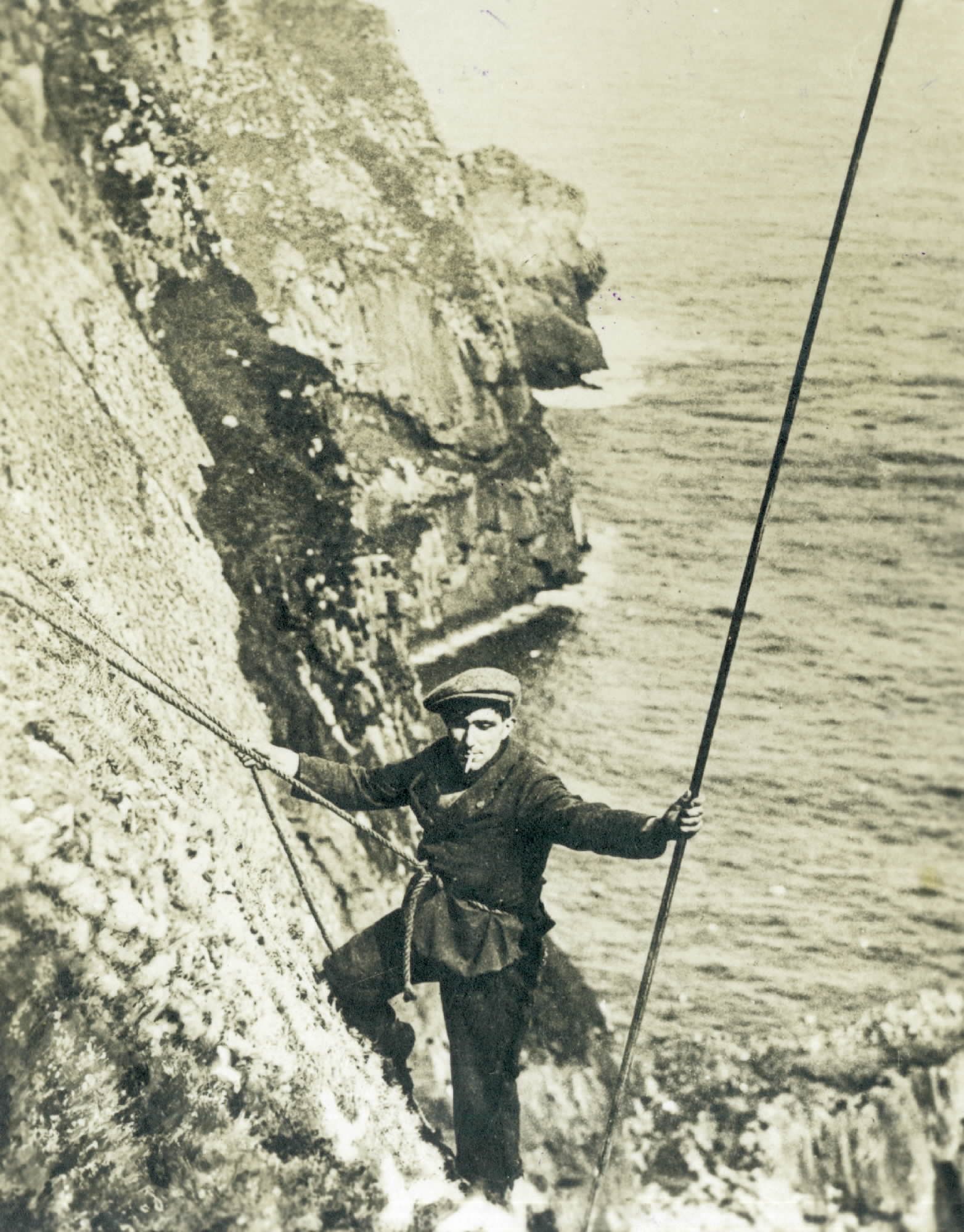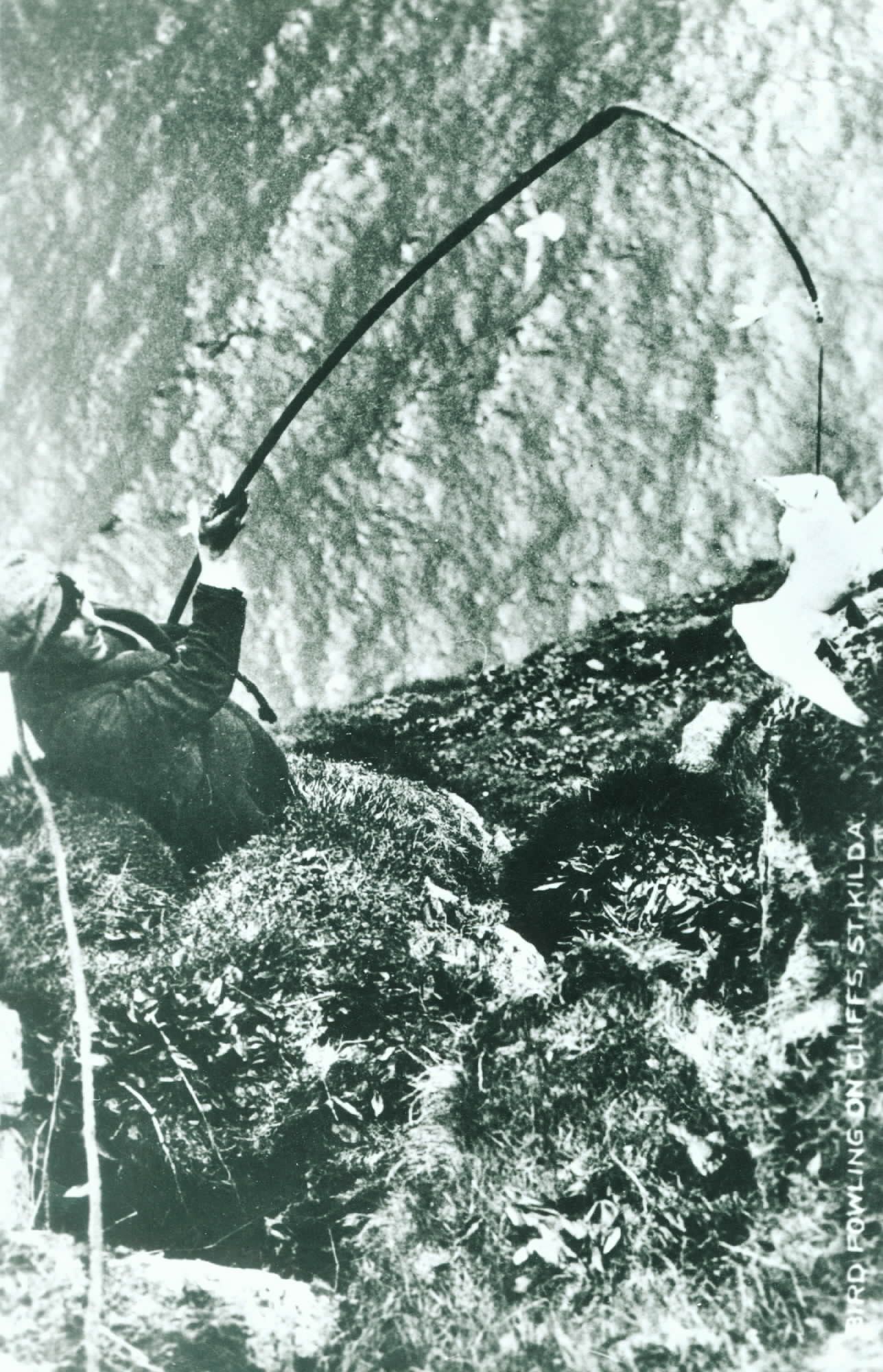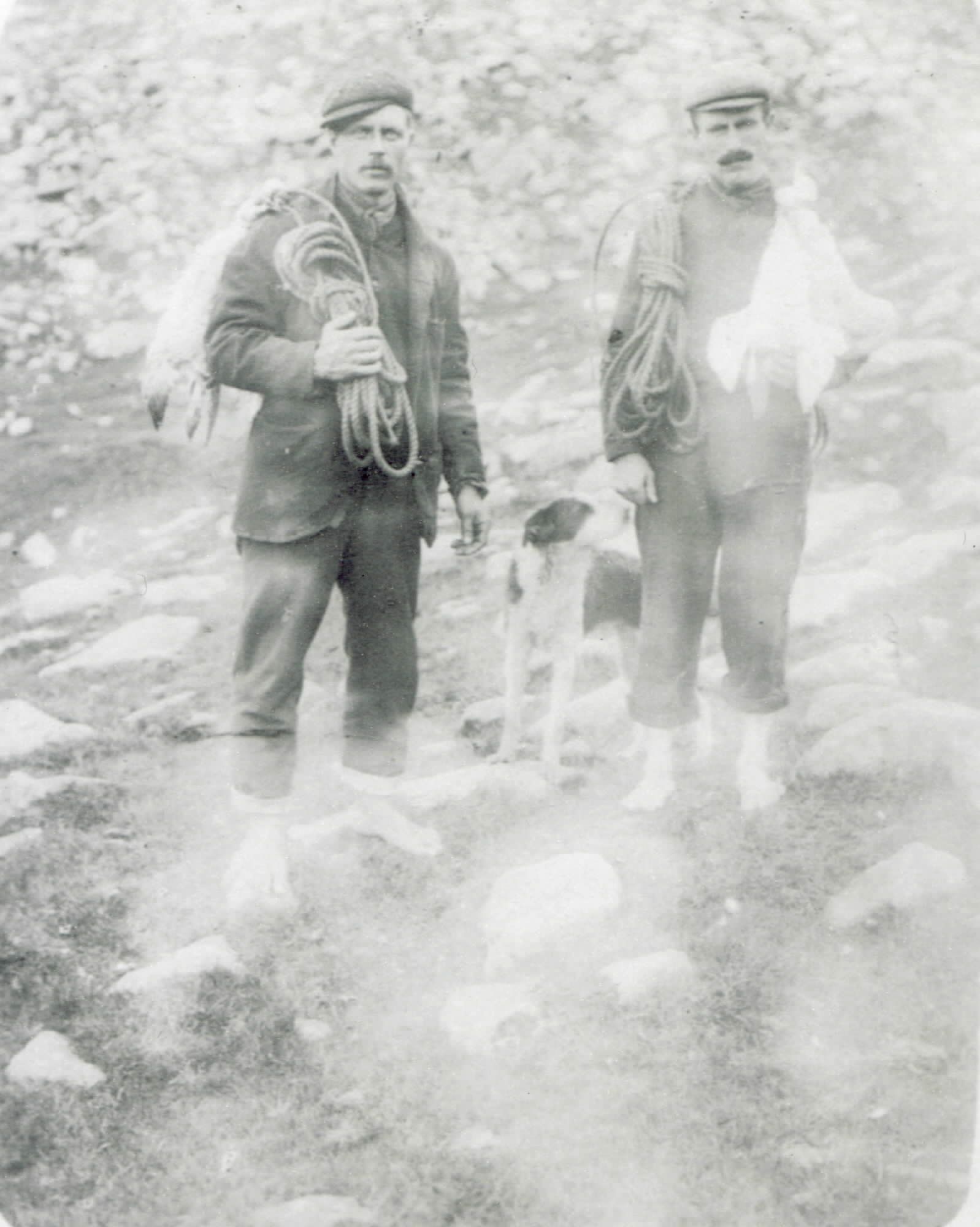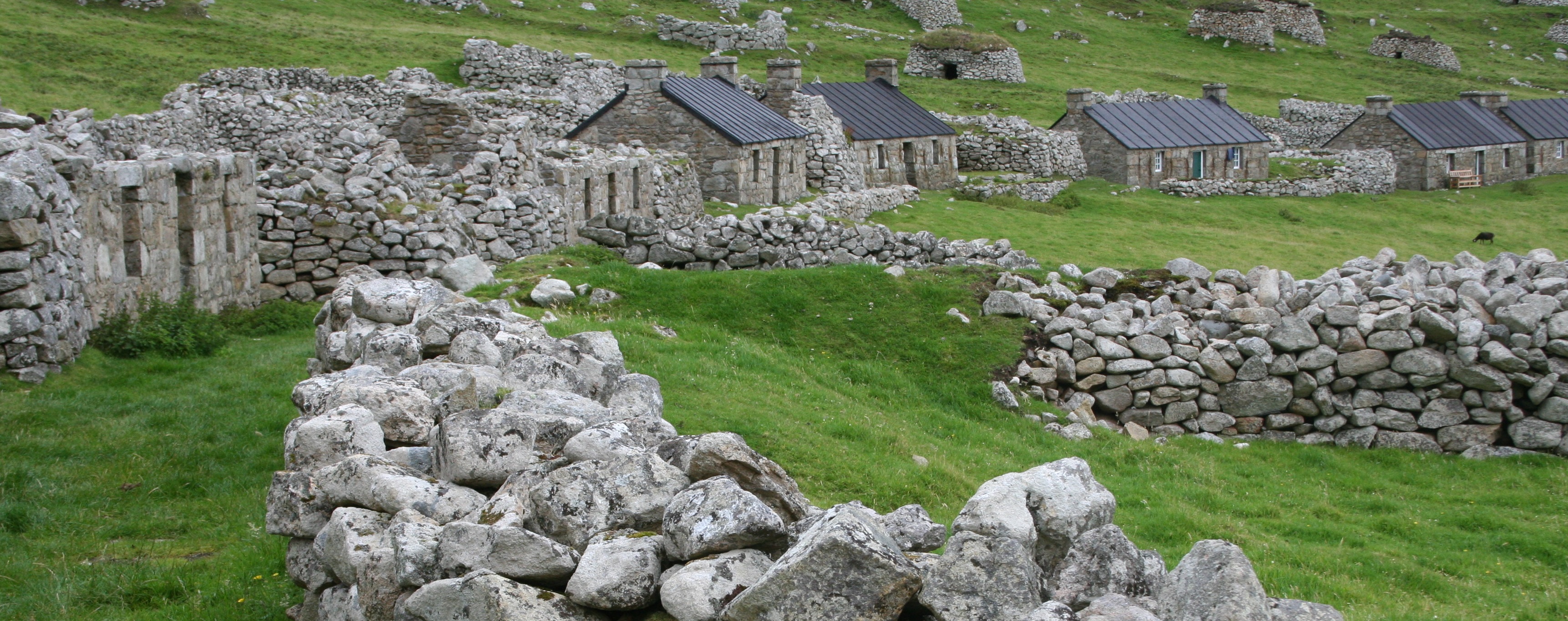Fowling in St Kilda


Evidence from archaeological sites show that the communities frequently exploited large seabird colonies in their area.
Fowling was an occupation of early dwellers. The men (fowlers) took birds from Boreray, Soay and Stac Dona by difficult climbing up rocks. The climbing was done by ropes made of salted cow hides with thongs cut around them and plaited six or nine folds. The rope is then tied around his torso and then climbing begins. The birds were caught by leaping and quiet frequently, the men fell into the sea and were hauled back up by others using their ropes and they tried again. Most men died from this by drowning or breaking their necks.
They killed these birds by laying flat on their backs with their chest exposed, which attracts the birds, as soon as the birds land on their chest; the men snapped its neck. Rev. Mackenzie wrote of stocks also been used to knock birds down when lying in this position. It is believed hundreds of birds were killed in a night using this method.
The feathers of birds were sold and birds fat was used as a remedy for aches and pains.
Harvesting of the fulmar and gannets was a communal effort, as it required climbing. The women prepared meals to last the fowling period. The children learned to fowl at 12 – 14 years and boys as young as 10 accompanied their father to climb. The men worked in groups of four – five but dwindled to two as the population diminished. Some men climbed while other waited on boats to receive the caught birds. Birds were collected from the lower sections of the cliffs by boats. Birds on the higher cliffs were heaped in a cranny or accumulated around the fowler, their heads tucked through his belt. The oil was then removed by the women and poured into gannets’ stomachs. In the evenings, the birds were then taken home and plucked then prepared for salting. Adult birds were most difficult to catch and this was done on dark nights. The fowlers killed these birds at night and returned in the morning. Everyone had cuts on their hands from the sharp beaks of these birds. In the 1870’s, visitors came to St Kilda to watch the demonstration of fowling and buy pretty eggs as souvenirs. Rare eggs such as those of the fulmar were sold to visitors and by post. The early 19th century saw locals take eggs simply for sale.

Fowling equipment
Ropes: Plaited cowhide strips protected by 2 lengths of sheepskin were used to make ropes. These were considered valuable and passed on from father to son. Some of these ropes were older then their owners.
Horsehair ropes encased in cowhide were also used but only two left, as no one from the 19th century knew how to make them. The ends of these ropes were fastened to a stake in the ground. Using for or five, it is said a person could catch several hundreds in a day. Horse hair nooses were attached to the ends of fishing rods about 13 feet long and used to catch birds at a distance.
Dogs (mix of tarrier and spaniel) catch up to five or six puffins at a time. The dogs are loyal and deliver their catch to only a member of its family. A good dog could catch up to 60 to 70 in a night.
Puffins’ eggs were collects using a spoon on the end of a stick about three feet long.
Gannets’ stomach as used to collect oil from birds, which hold up to three imperial pints.
Preservation
In the 17th century, drying in the cleitean preserved birds; no salt was used. By 1758, every family had a great number of preserved birds; about 12 barrels, salted in casks for winter provision.
Feathers and oil
The feathers of birds contributed to their rent in the 17th century. About 140 stones were paid annually and about 24lbs of birds making a stone. It is said that about 800 puffins’ feathers makes a stone. Thousands of birds had to be killed to afford rent of 140 stones. At plucking time, the town was paved with feathers. In Hirte, it is said that many of the birds were caught for their feathers, though some were eaten, many of the bodies were used for manure or thrown away.

